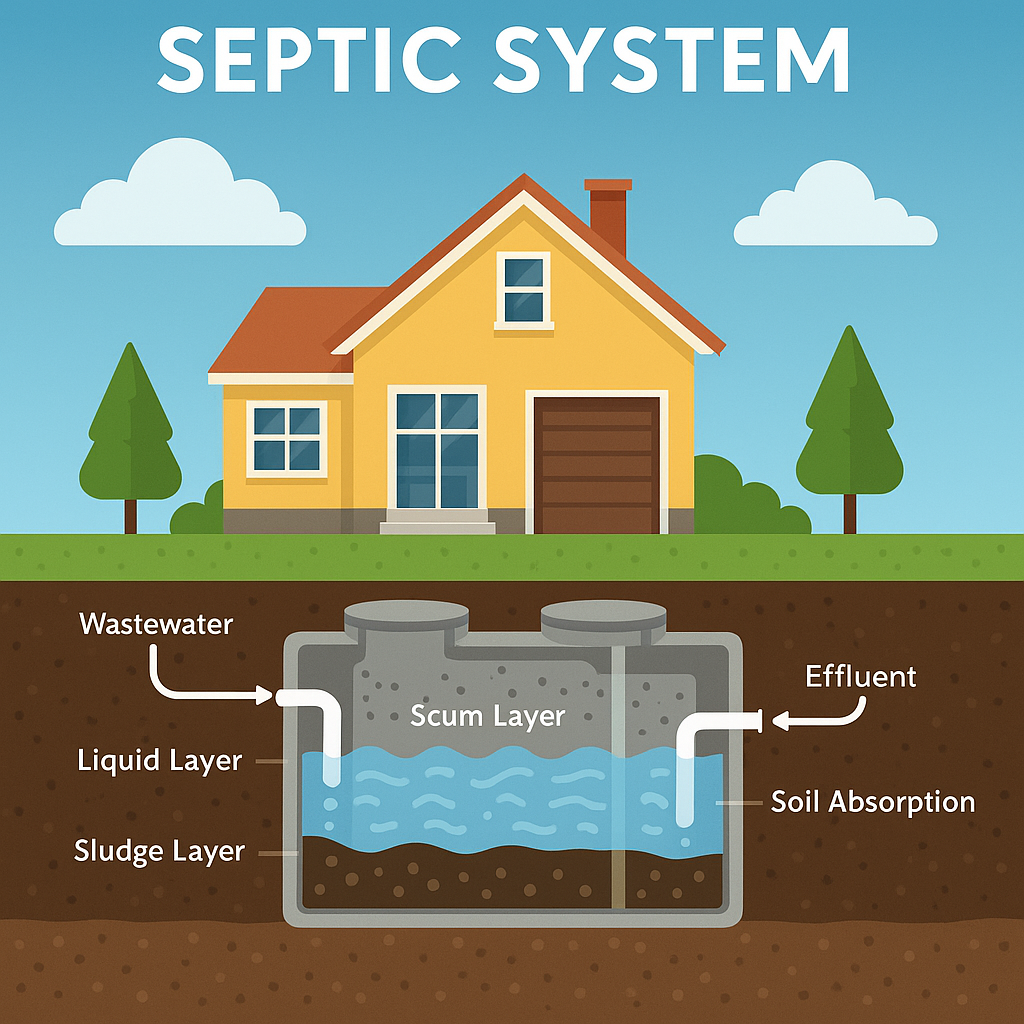A septic system is a critical yet often overlooked component of many residential and rural properties, responsible for treating and disposing of household wastewater in locations that are not connected to municipal sewer systems. For millions of homeowners, understanding how a septic system functions—and more importantly, how to maintain it—can prevent costly repairs, environmental contamination, and health hazards.
At its core, a septic system is a decentralized wastewater treatment structure. It consists of a septic tank and a soil absorption field (also known as a drain field or leach field). When water from toilets, showers, sinks, washing machines, and dishwashers exits a home, it flows into the septic tank. This tank, typically buried underground, holds the wastewater long enough for solids to settle at the bottom as sludge, while lighter materials such as oils and grease float to the top and form a scum layer. The remaining liquid—called effluent—then flows out of the tank into the drain field.
In the drain field, the wastewater is filtered through soil, which naturally removes harmful bacteria, viruses, and nutrients. Over time, the purified water reenters the groundwater system. This process is environmentally safe when the system is properly installed and maintained. However, failure to maintain a septic system can result in backups, foul odors, contamination of nearby water sources, and expensive emergency repairs.
Routine maintenance is key to a healthy septic system. Most experts recommend pumping the septic tank every three to five years, though the exact frequency depends on the size of the tank, the number of household members, and overall water usage. Regular inspections—typically every one to three years—help catch early warning signs like excessive sludge buildup, tank leaks, or drain field saturation.
Water conservation also plays a significant role in preserving septic system health. Overloading the system with too much water in a short period of time can push solids into the drain field, causing clogging and eventual failure. Installing high-efficiency toilets, showerheads, and washing machines can reduce the volume of water entering the tank. Spacing out laundry loads and fixing leaks promptly are also important habits.
Homeowners must also be mindful of what goes down the drain. Flushing non-biodegradable items like wipes, diapers, or feminine hygiene products can clog the system. Similarly, pouring grease, harsh chemicals, or medications into the sink or toilet can disrupt the natural bacterial processes in the tank, impairing its function and damaging the soil in the drain field.
Land use around the septic system also matters. Trees and shrubs should be planted away from the drain field, as roots can infiltrate and damage the pipes. Heavy vehicles and construction equipment should never drive over or park on top of the system, as compacted soil can reduce filtration capacity and crush underground components.
Modern septic systems may also include advanced treatment units, alarms, or filters. These systems offer improved treatment efficiency, particularly in sensitive environmental areas. However, they may require additional maintenance and professional oversight, making it essential for homeowners to understand the specific design and requirements of their system.
For homebuyers, a septic inspection should be a mandatory part of the due diligence process. Identifying an aging or malfunctioning system upfront can save thousands in repairs and potential fines. Local health departments and environmental agencies often provide records of previous inspections, system designs, and permits.
In conclusion, a septic system is a silent workhorse that plays a crucial role in managing a property’s wastewater. When understood and properly cared for, it can function efficiently for decades. Neglect, on the other hand, can lead to health risks, environmental damage, and significant financial loss. For every property owner with a septic system, knowledge and maintenance are the keys to long-term peace of mind.
